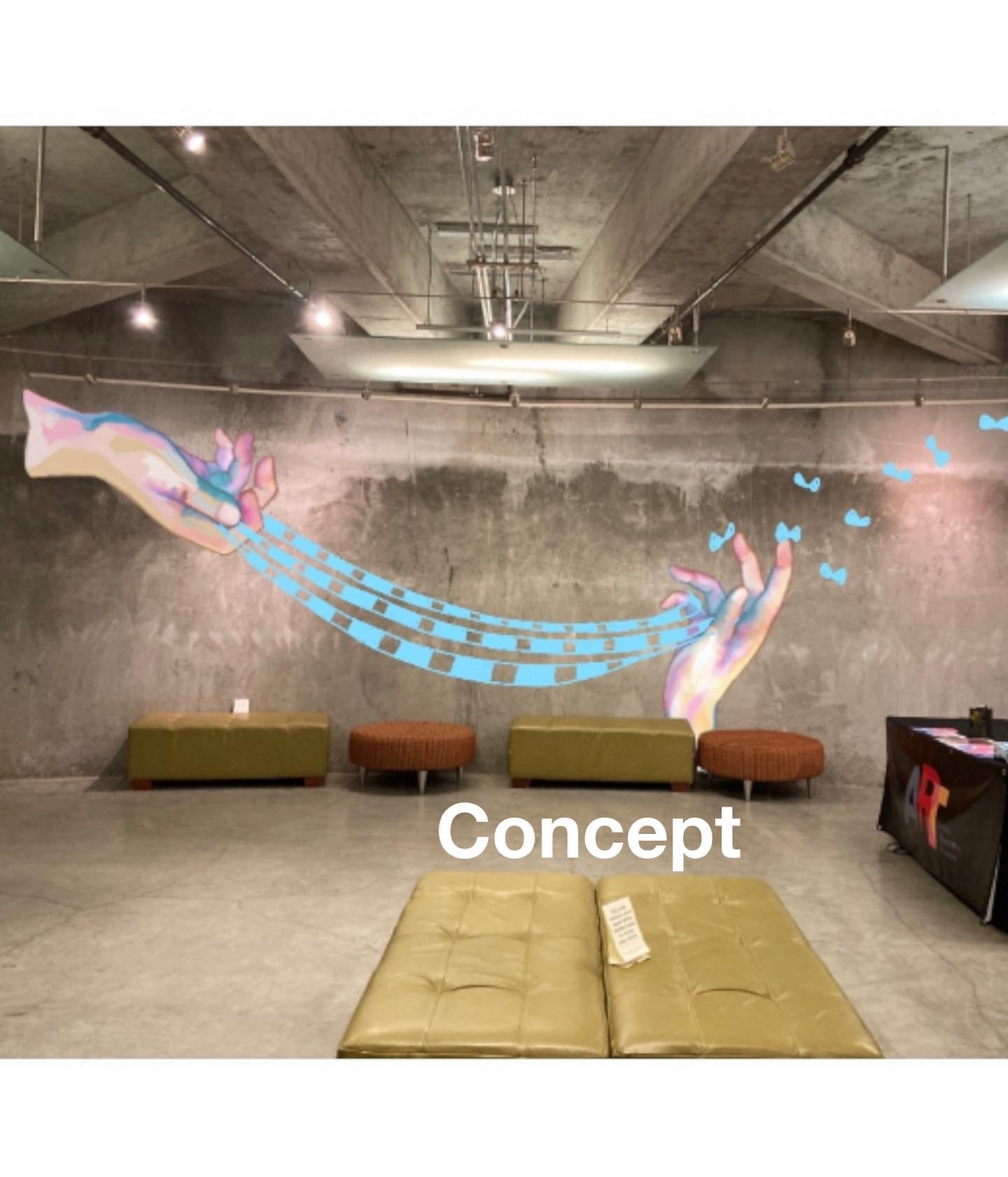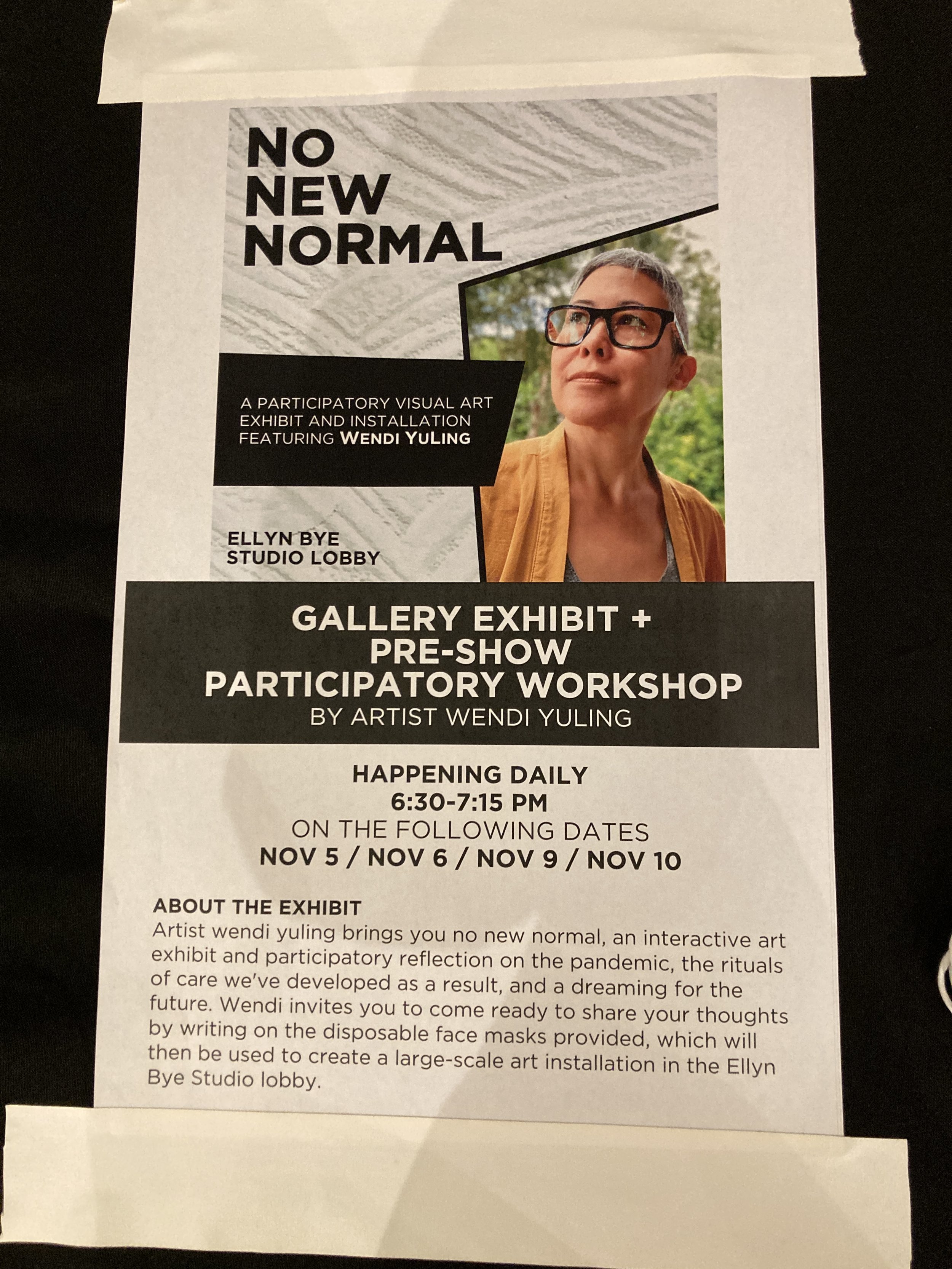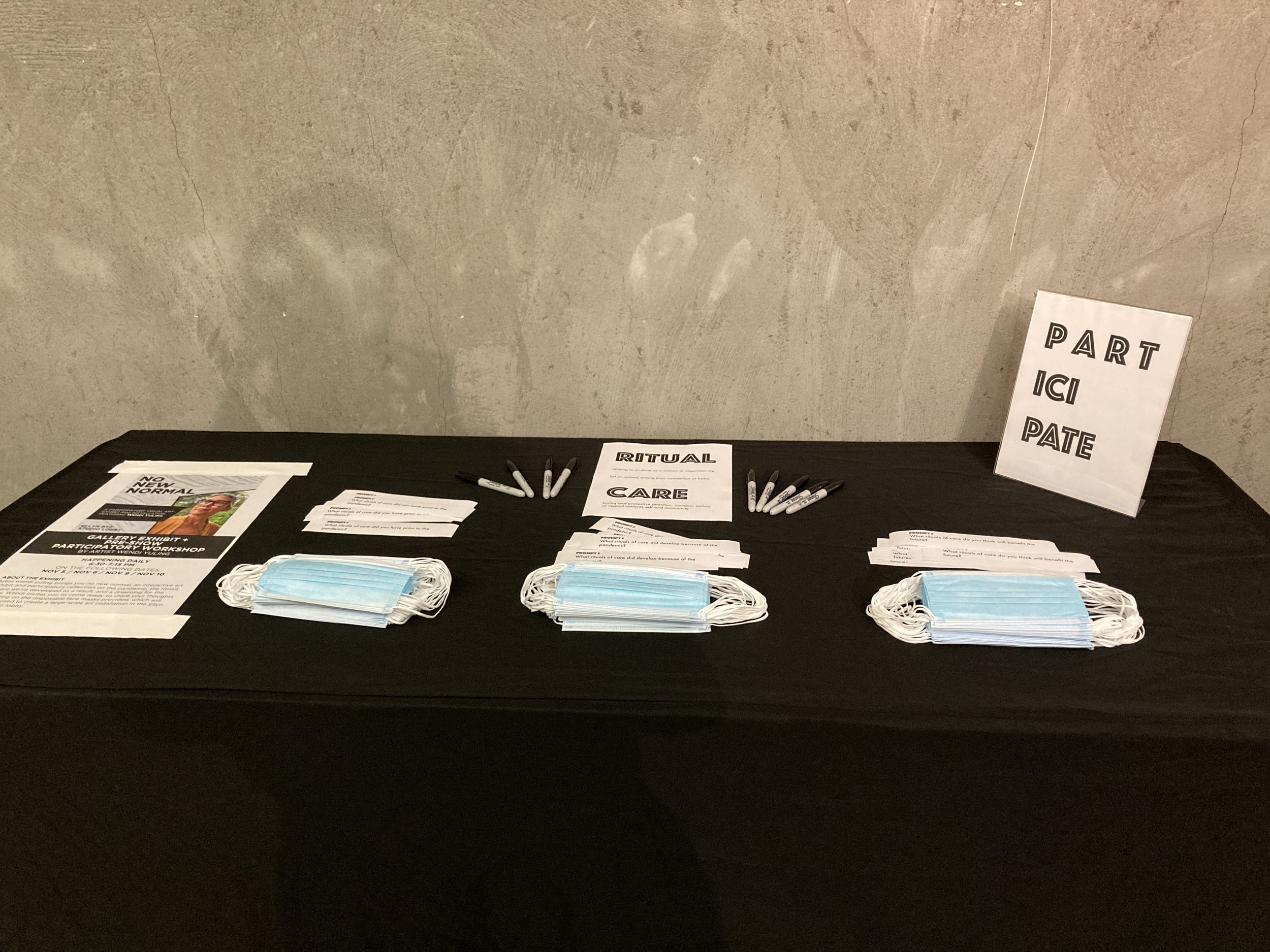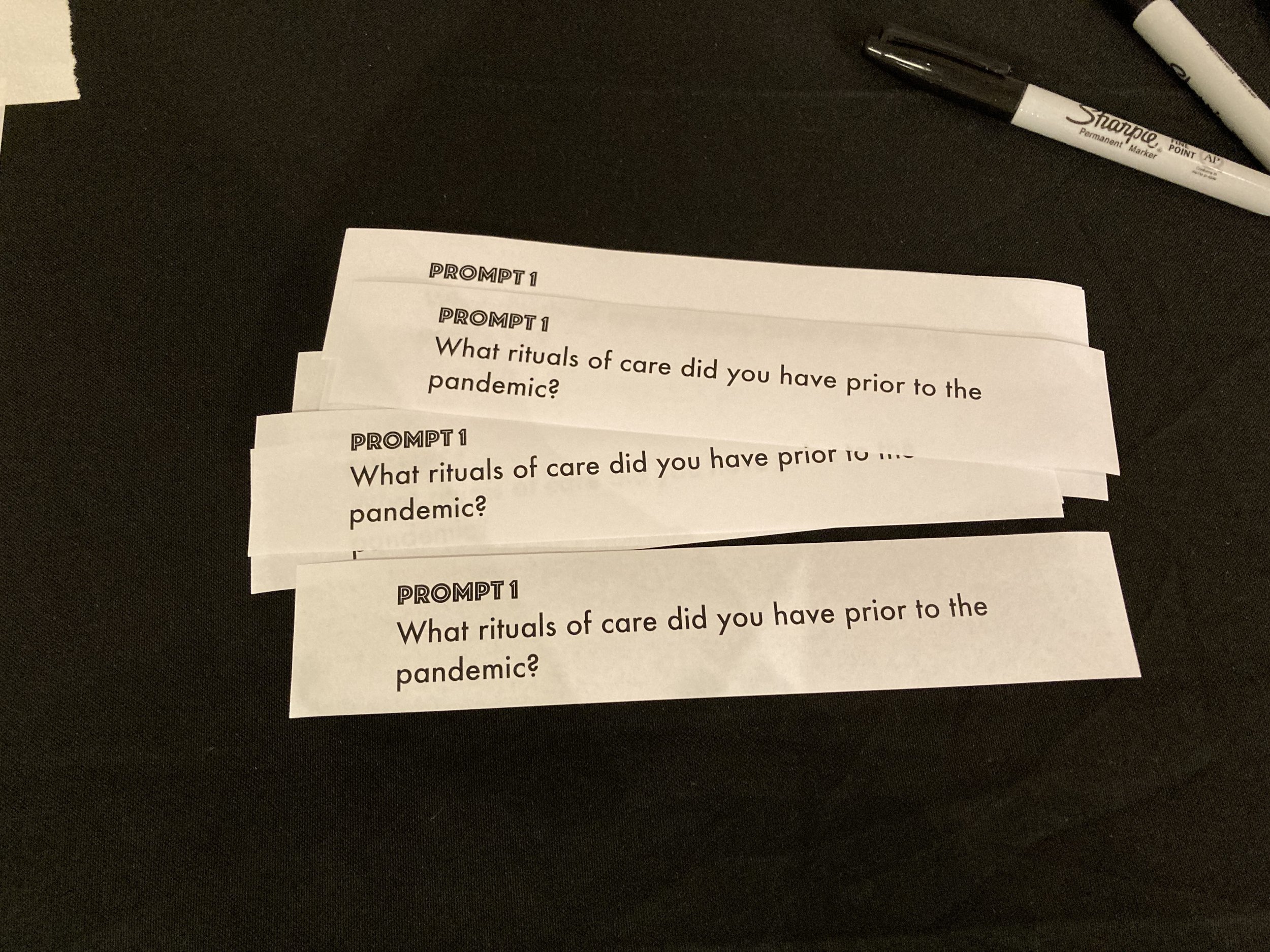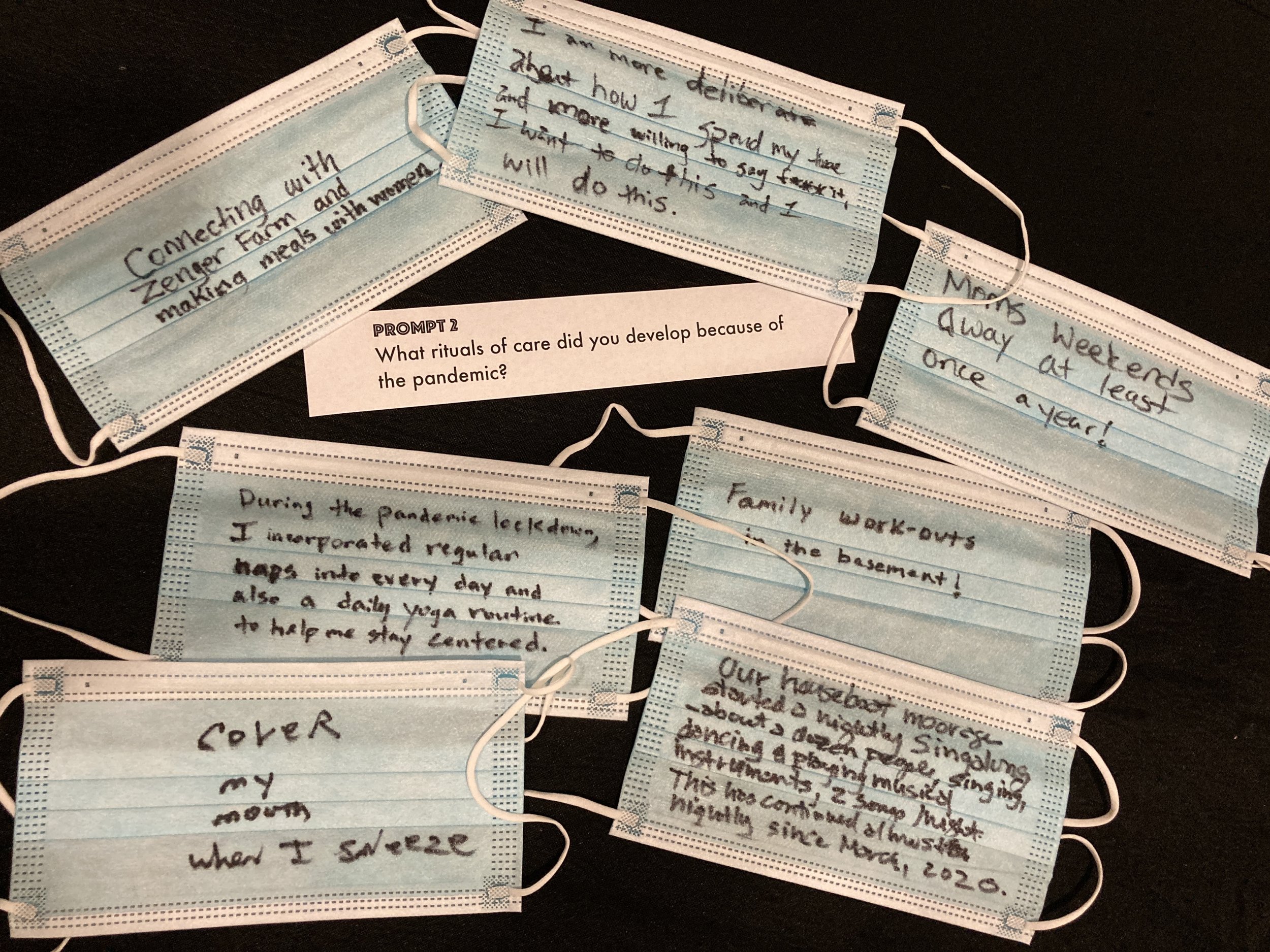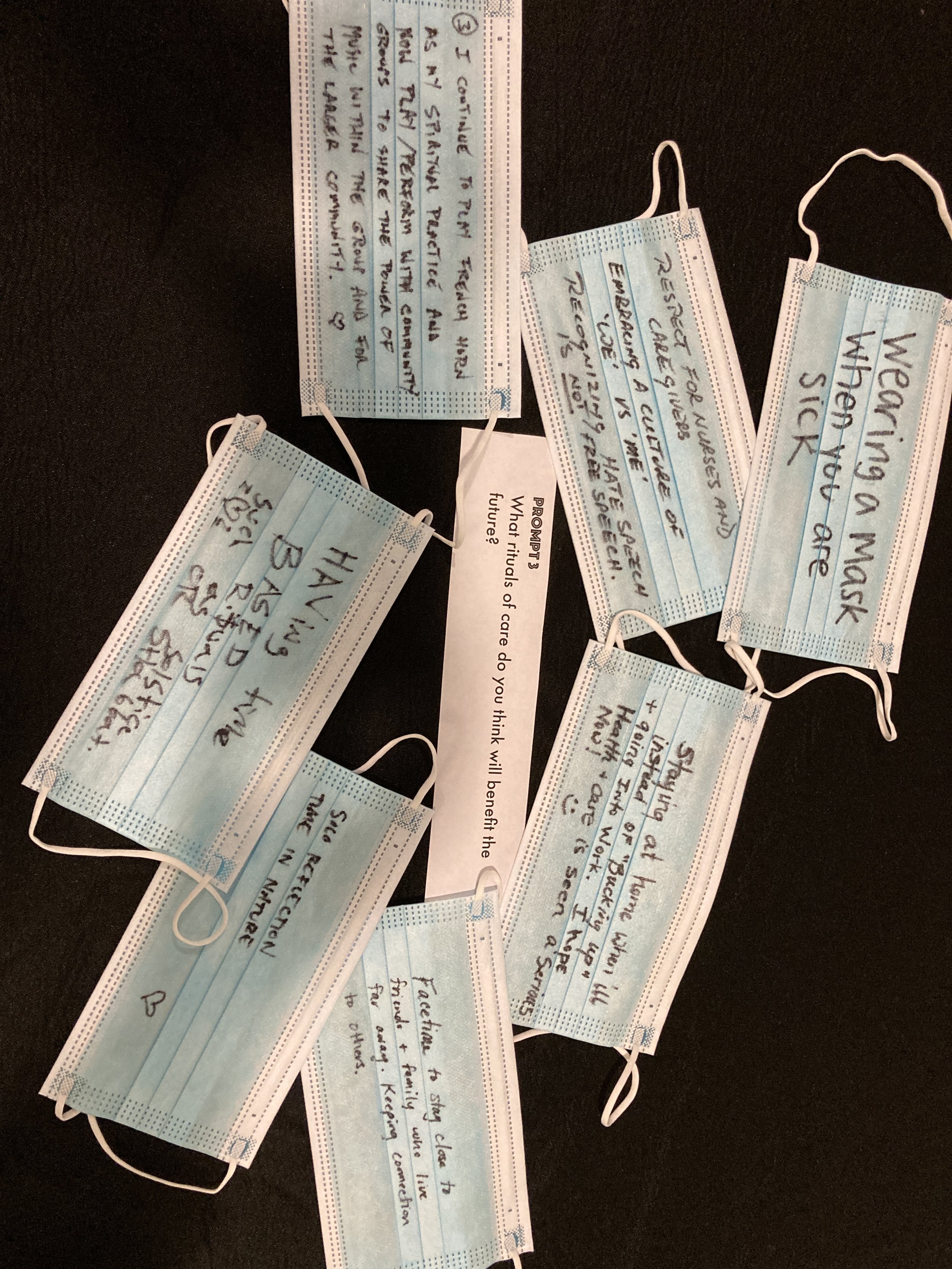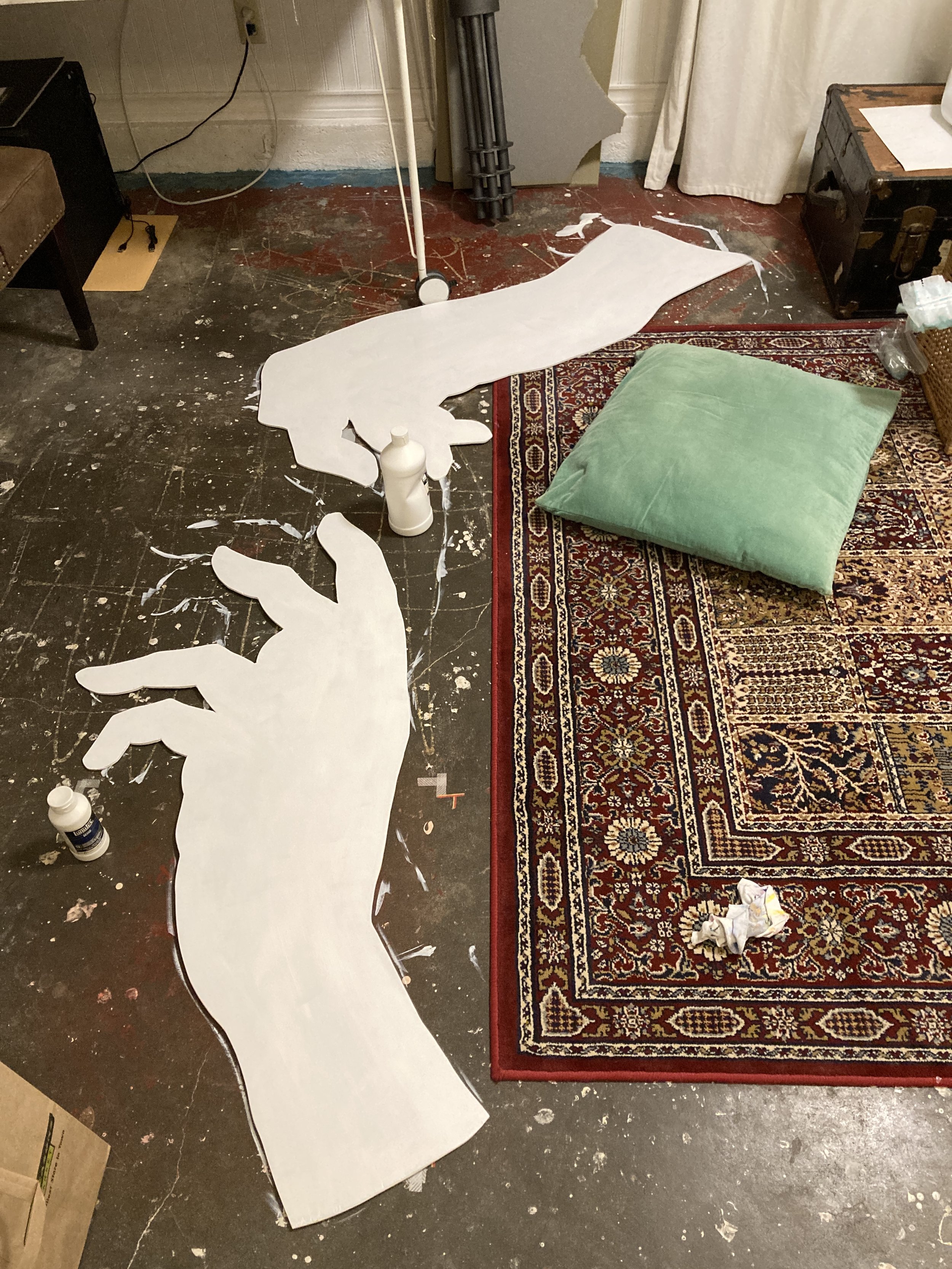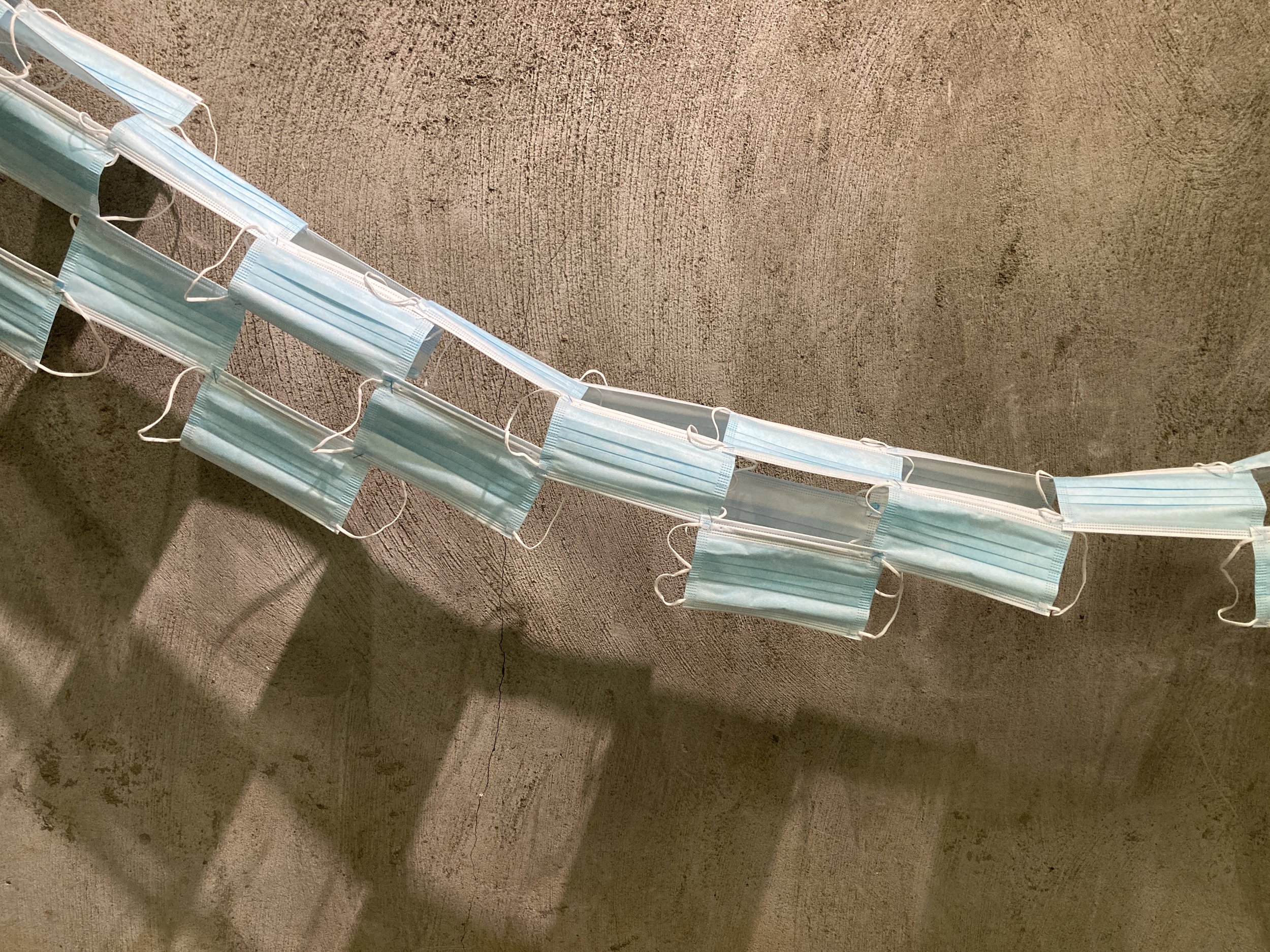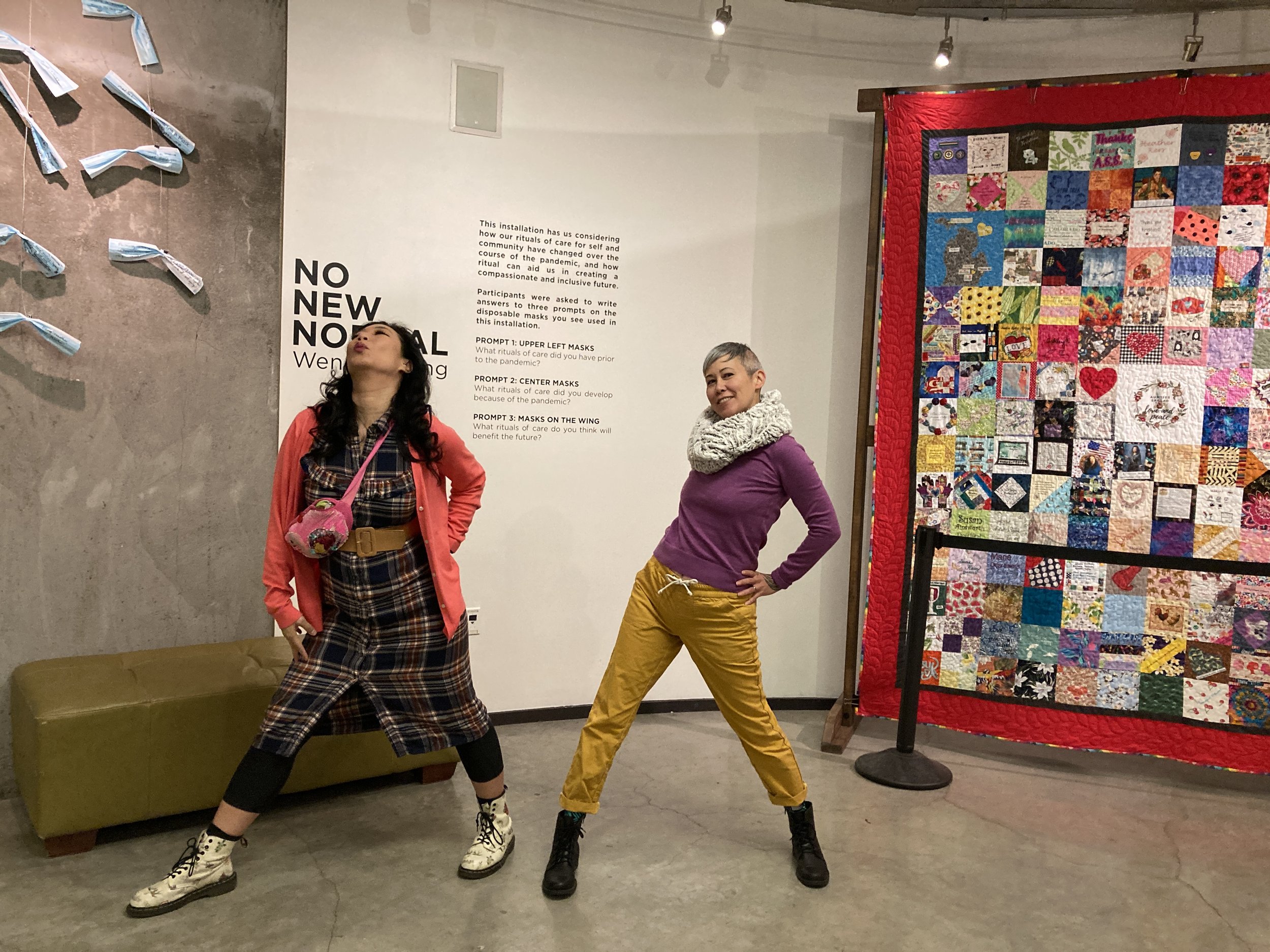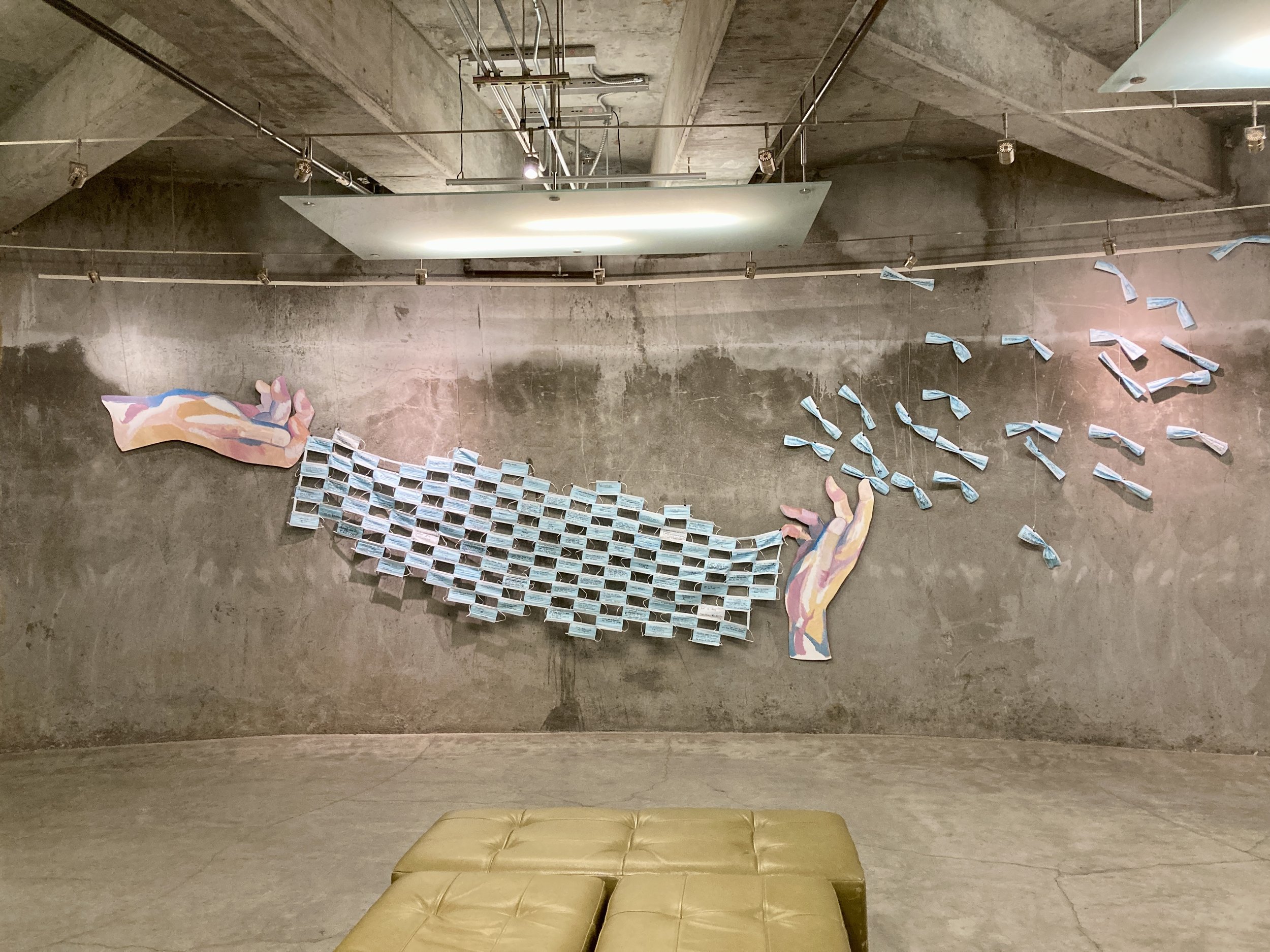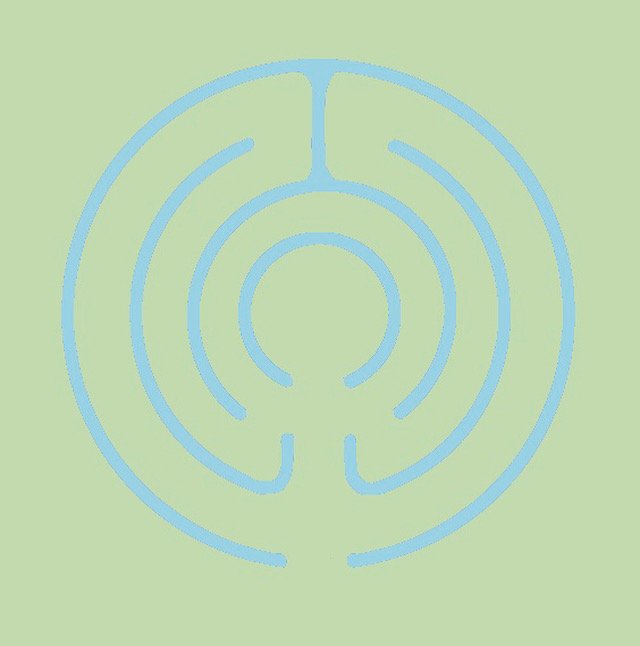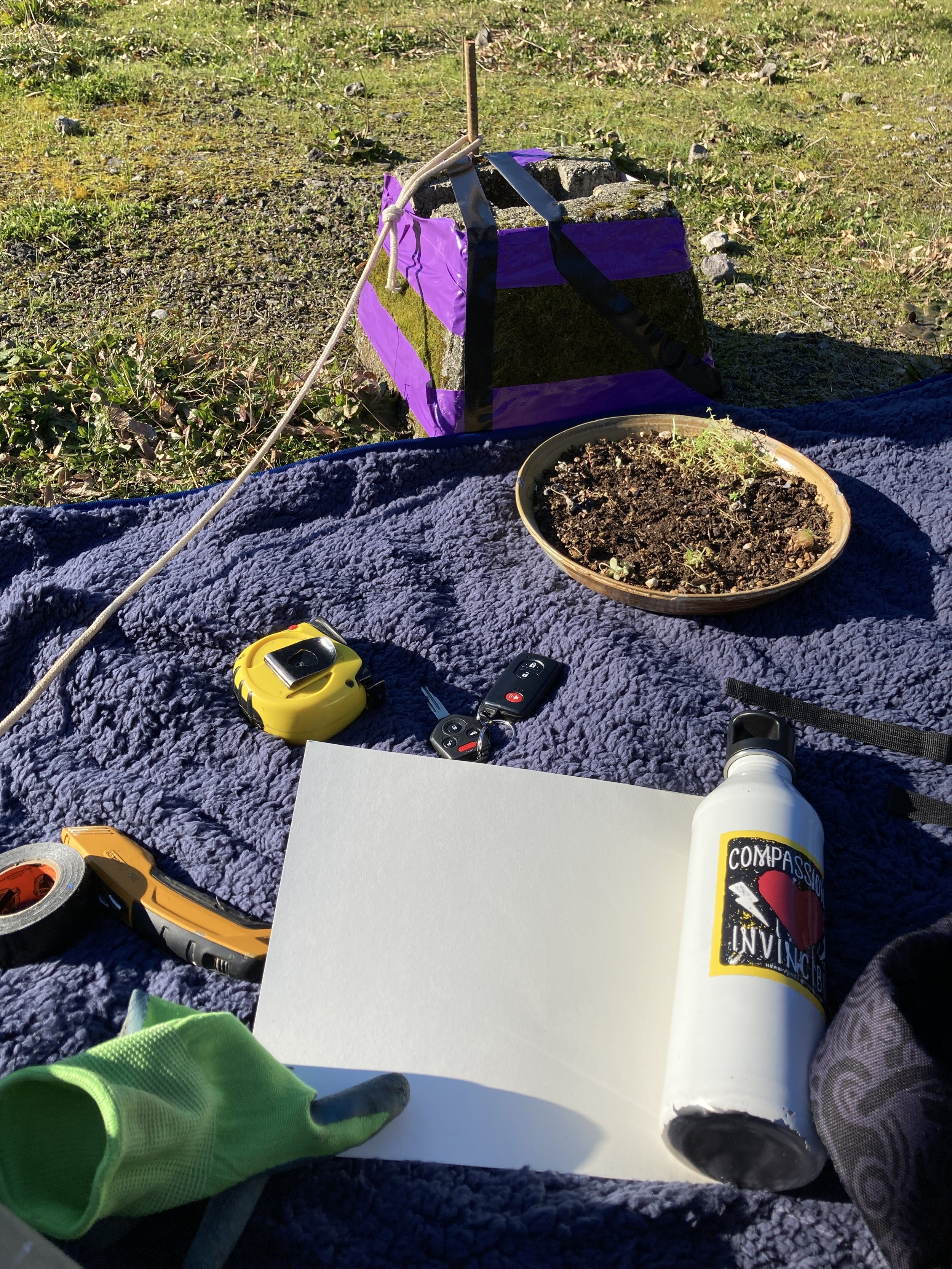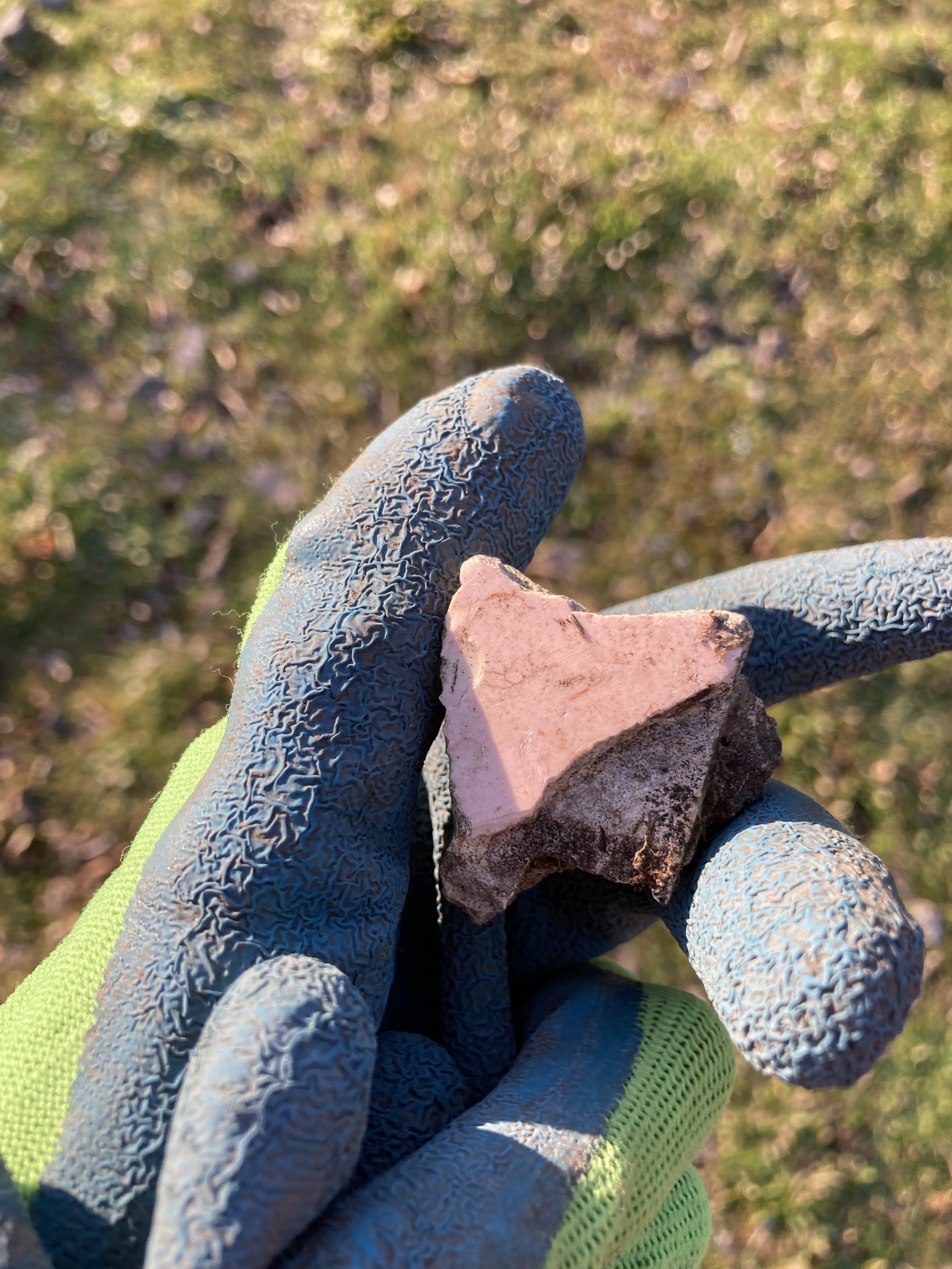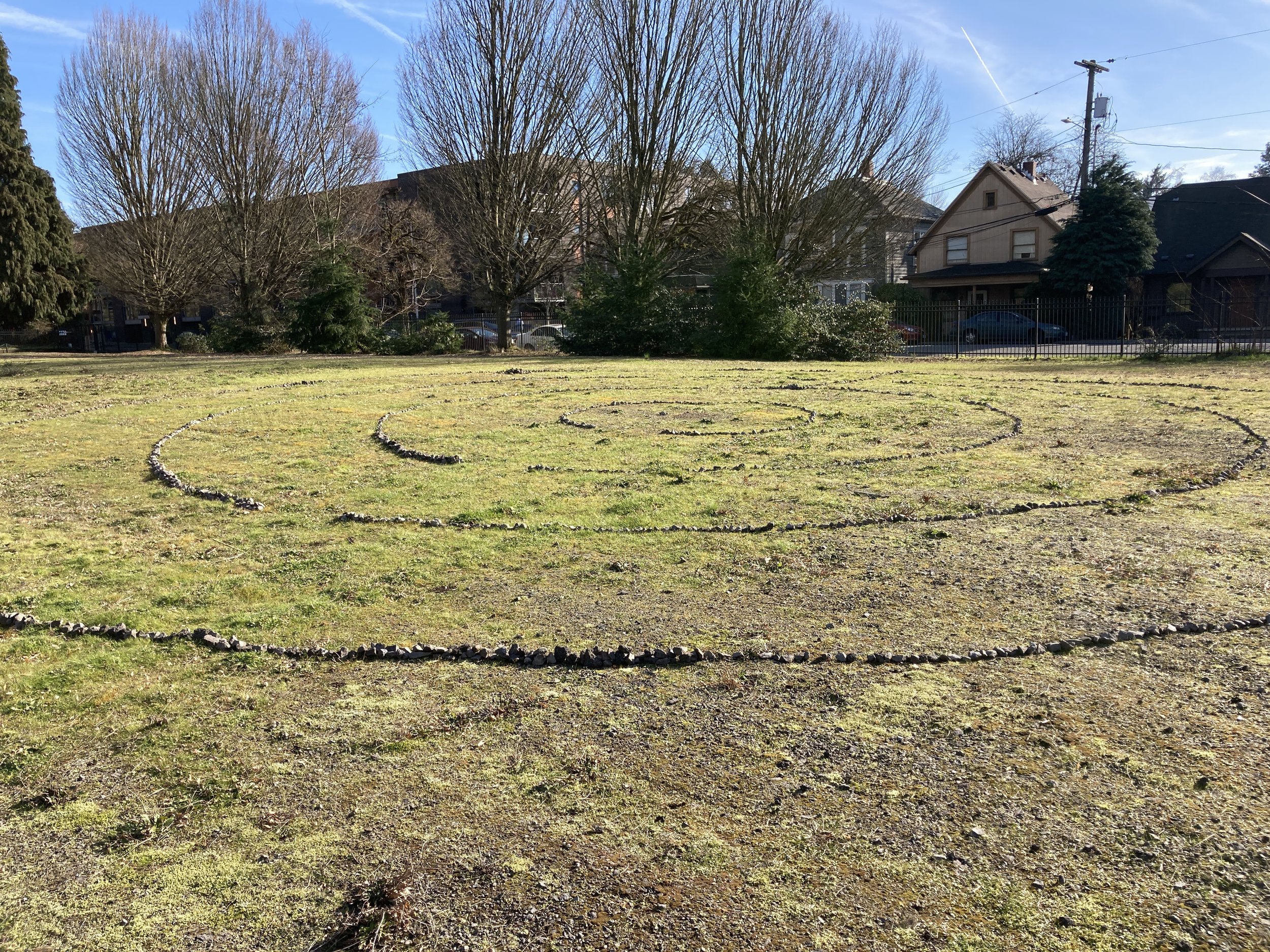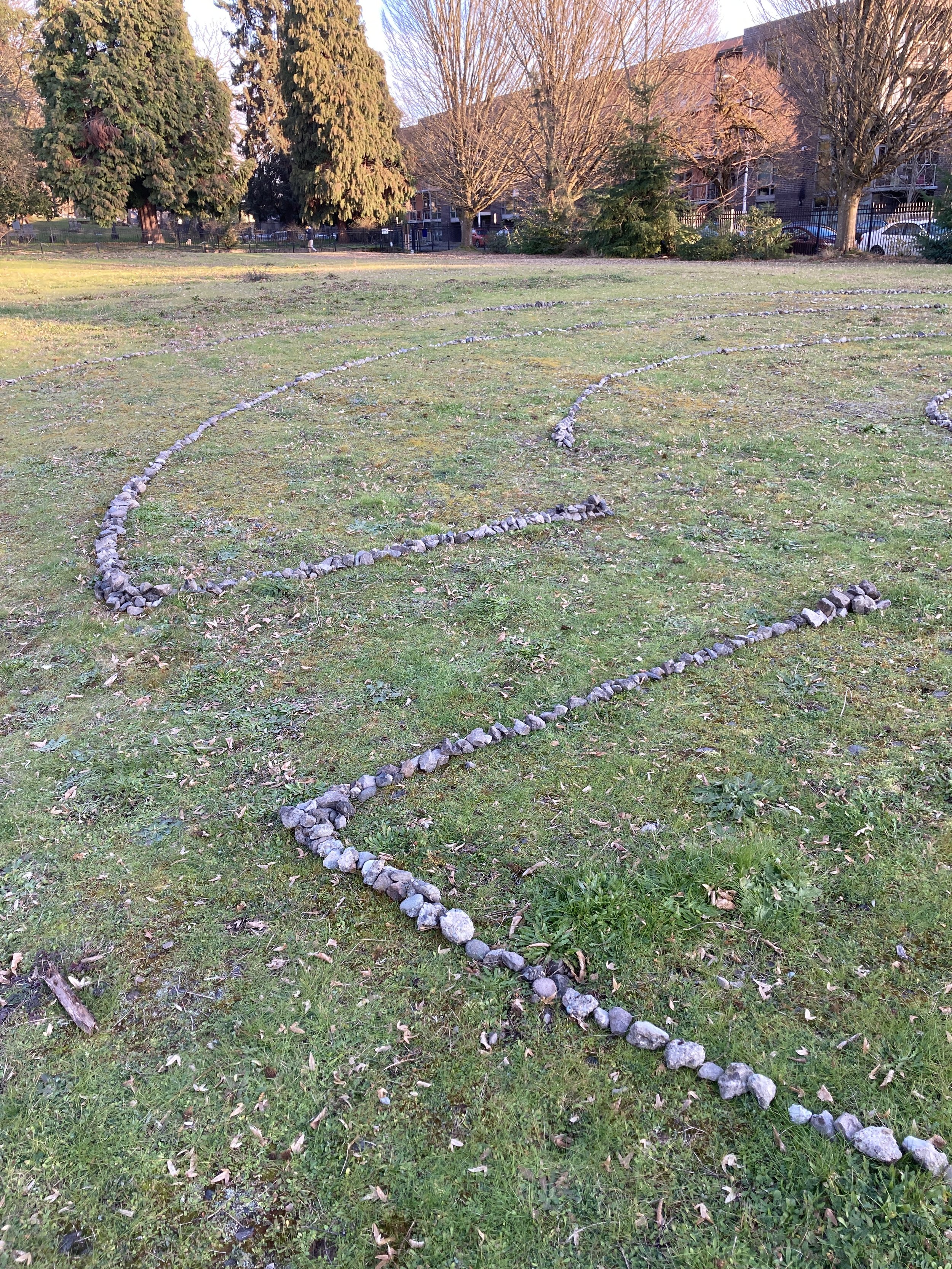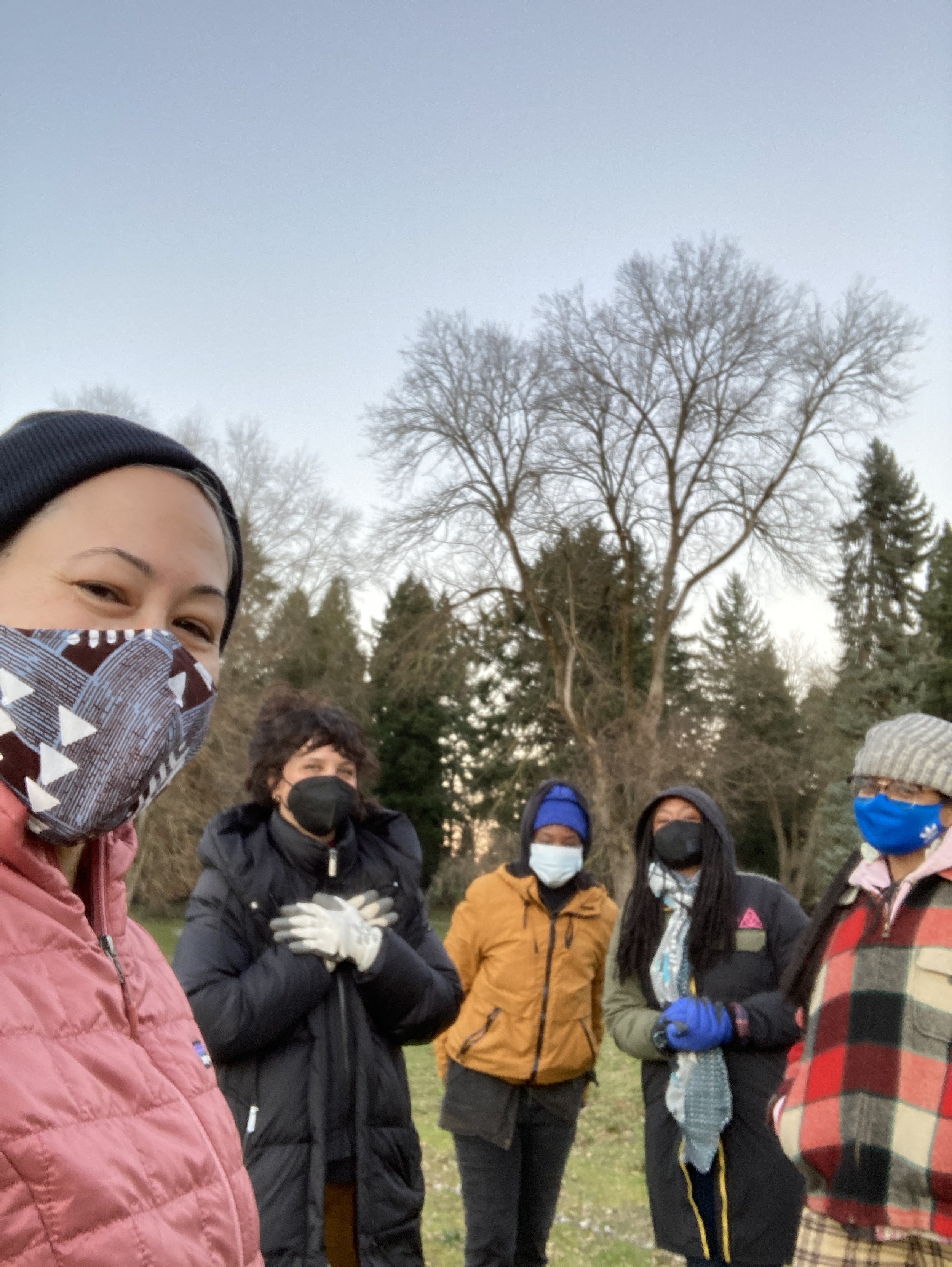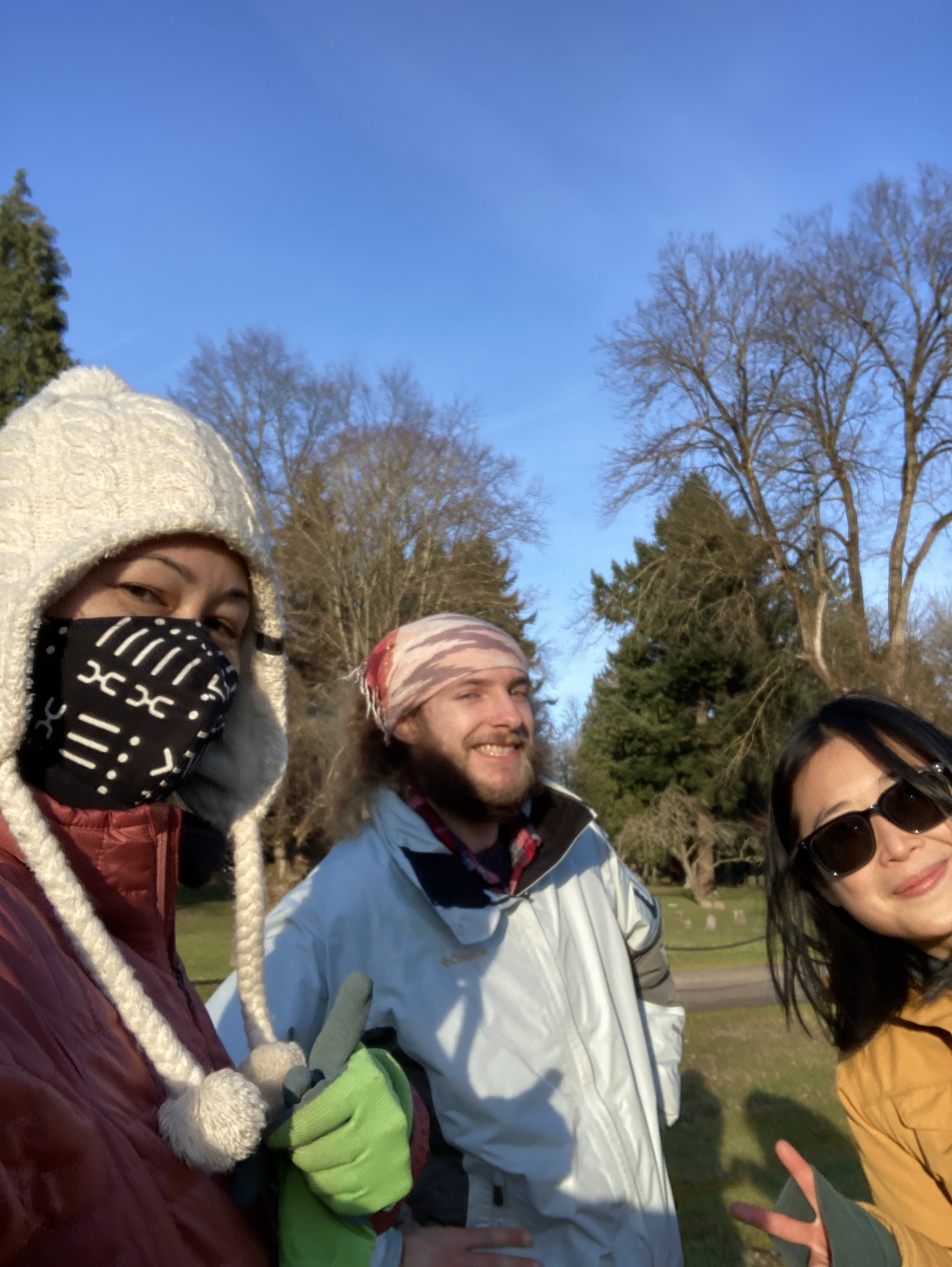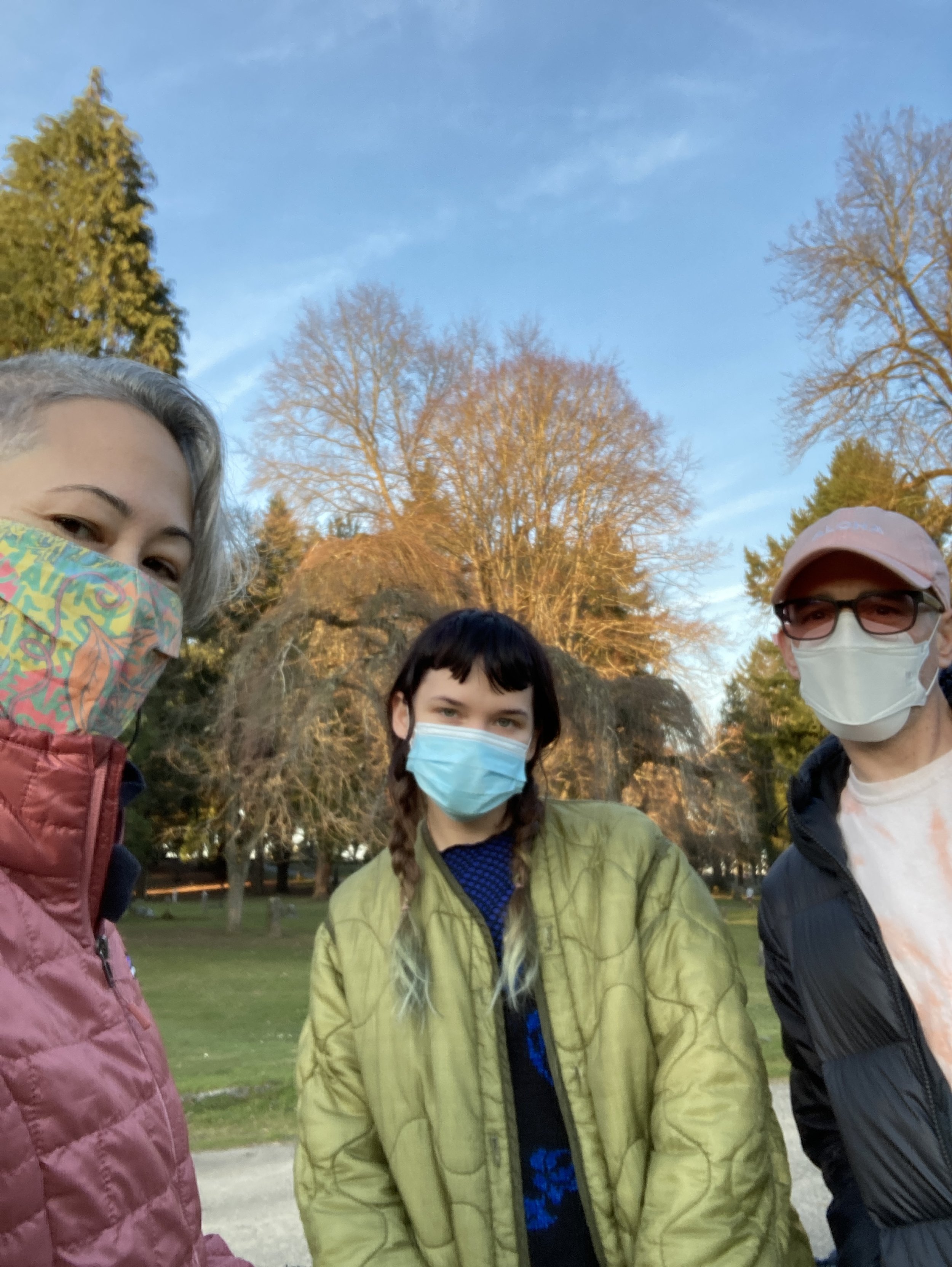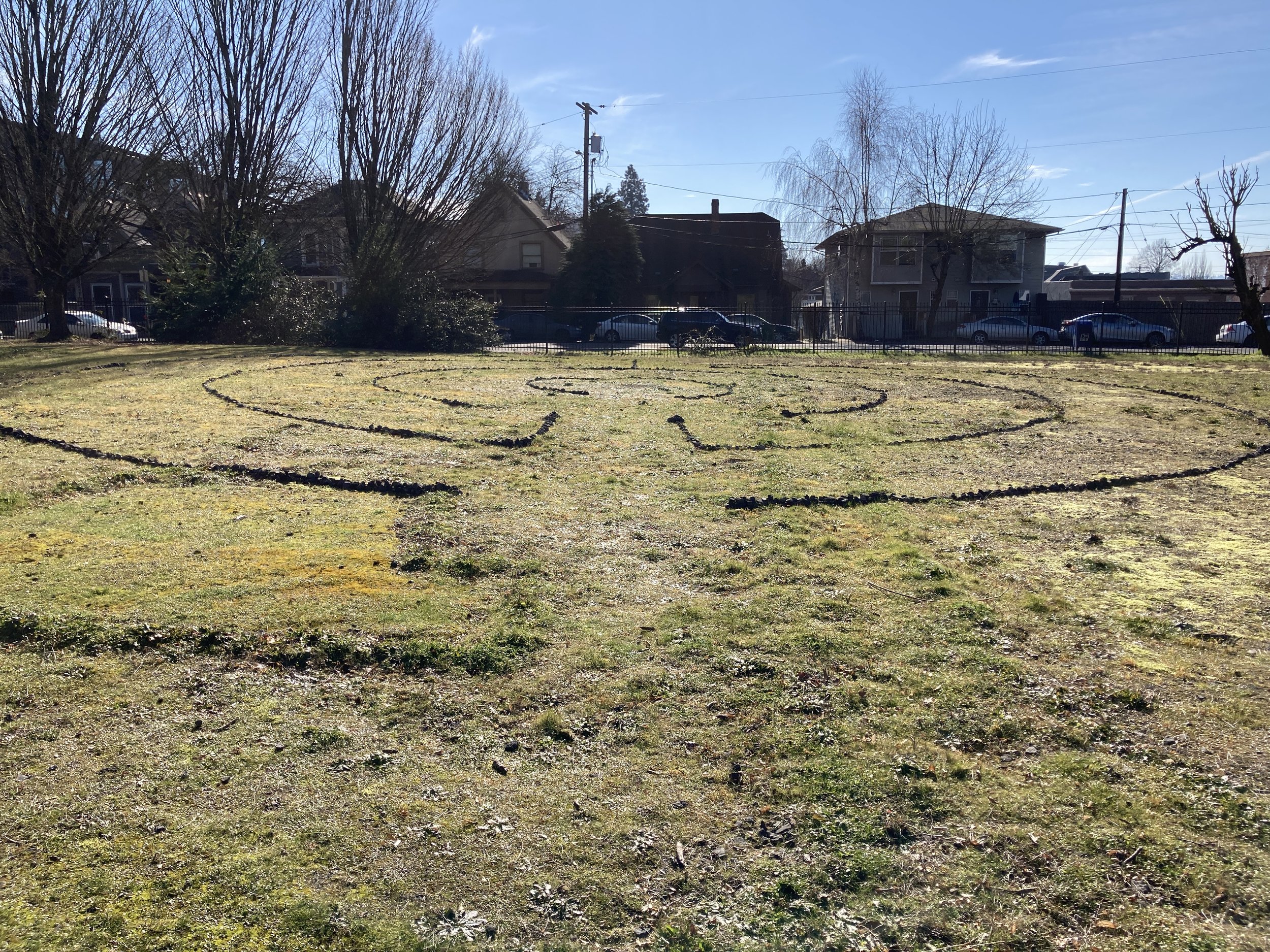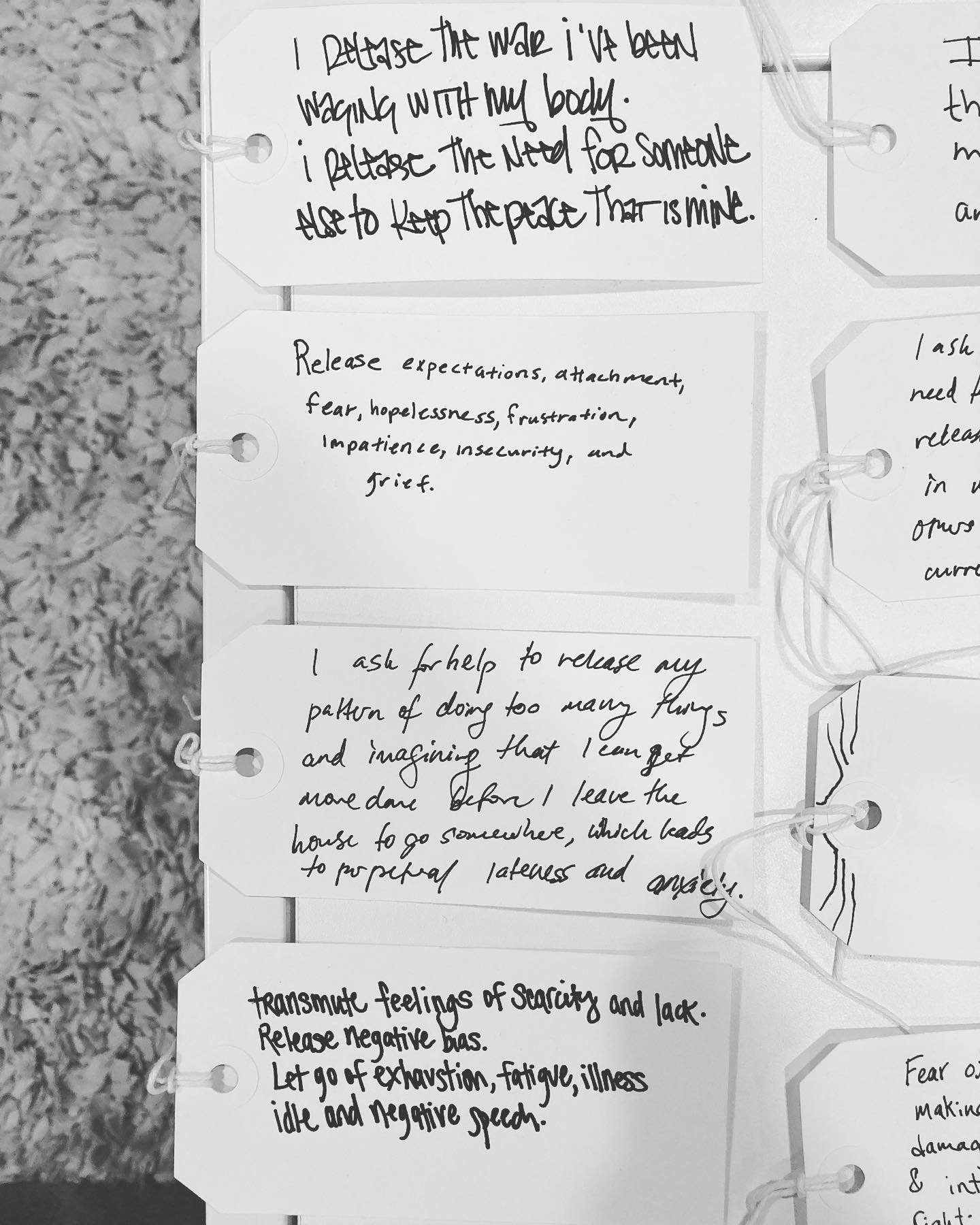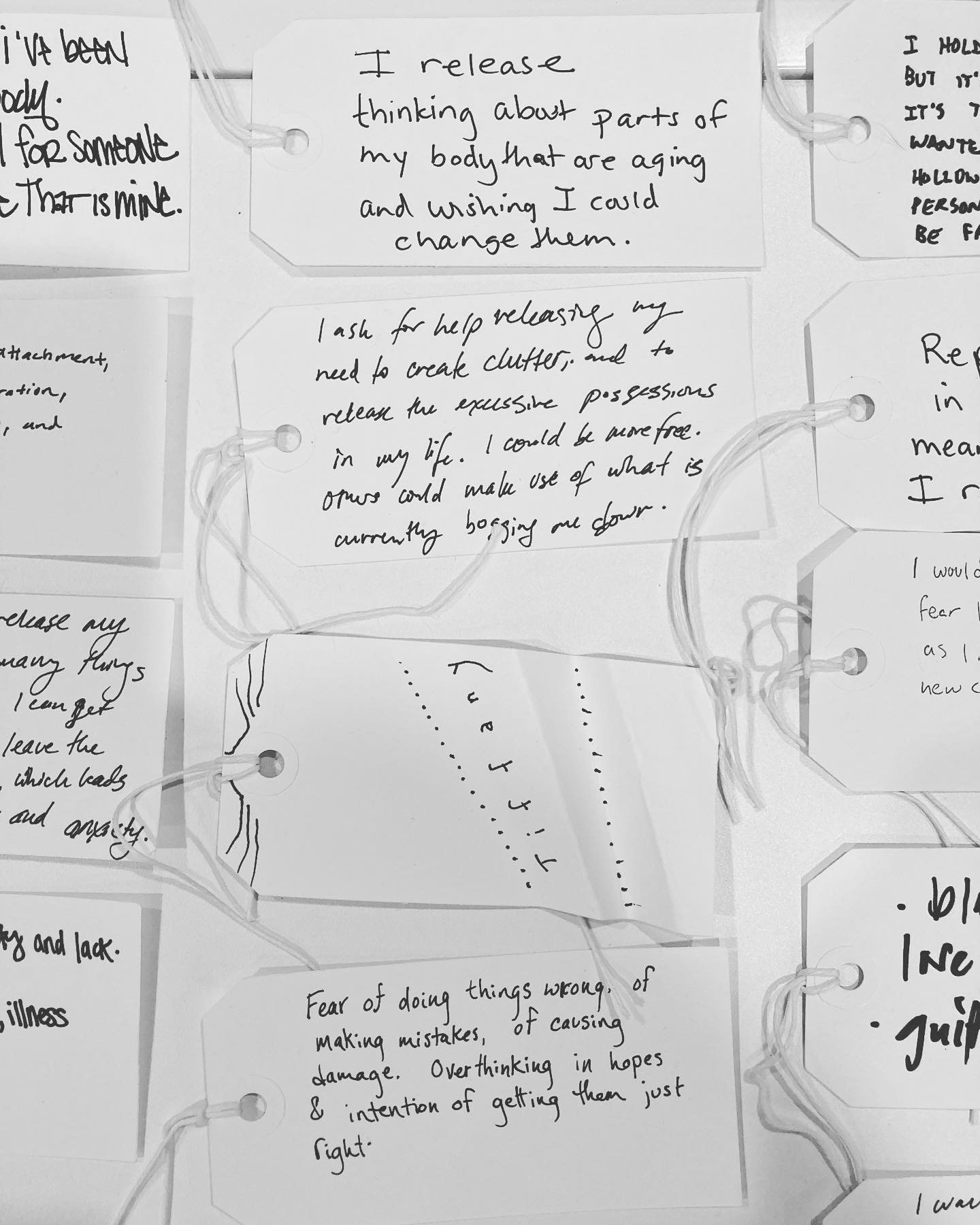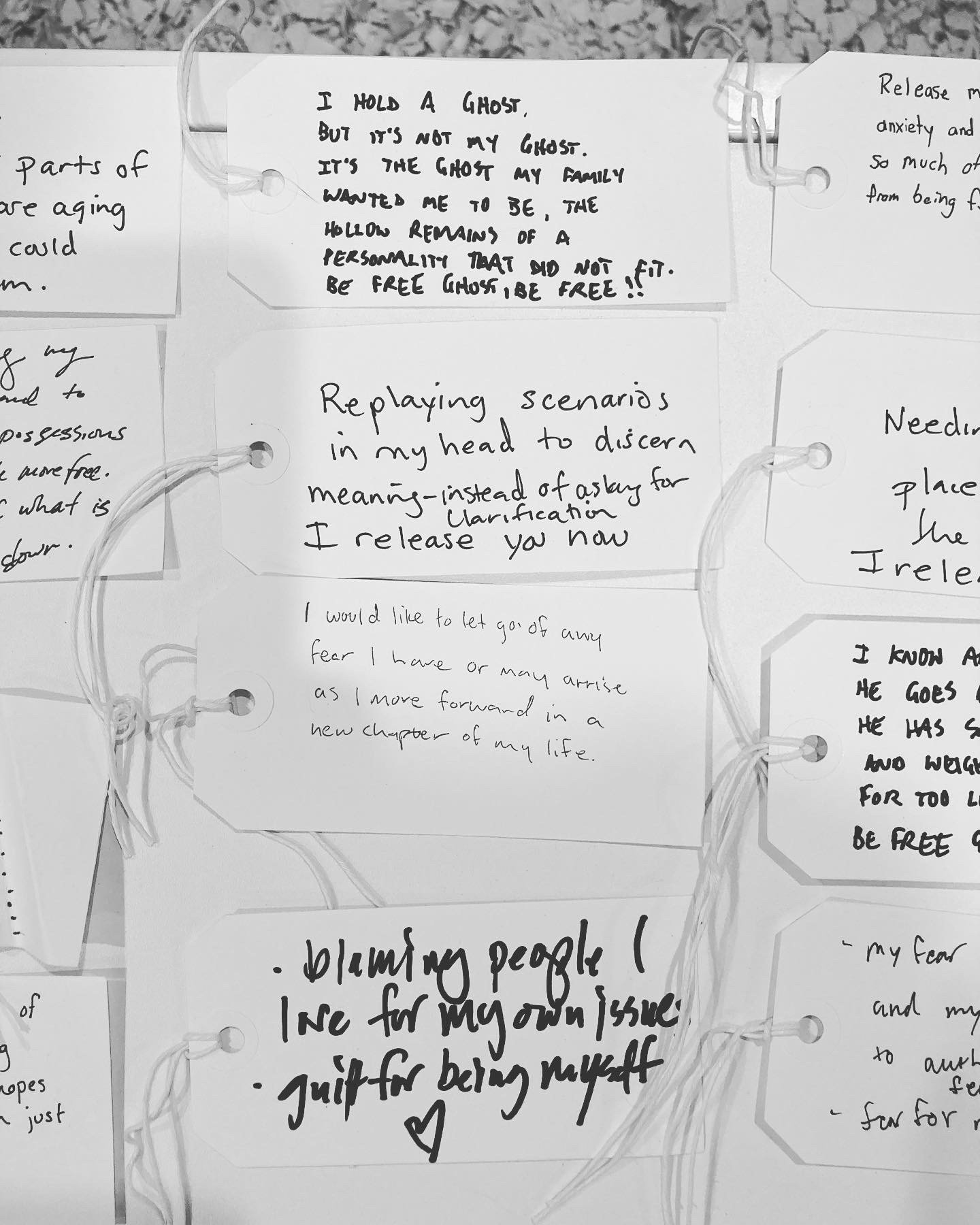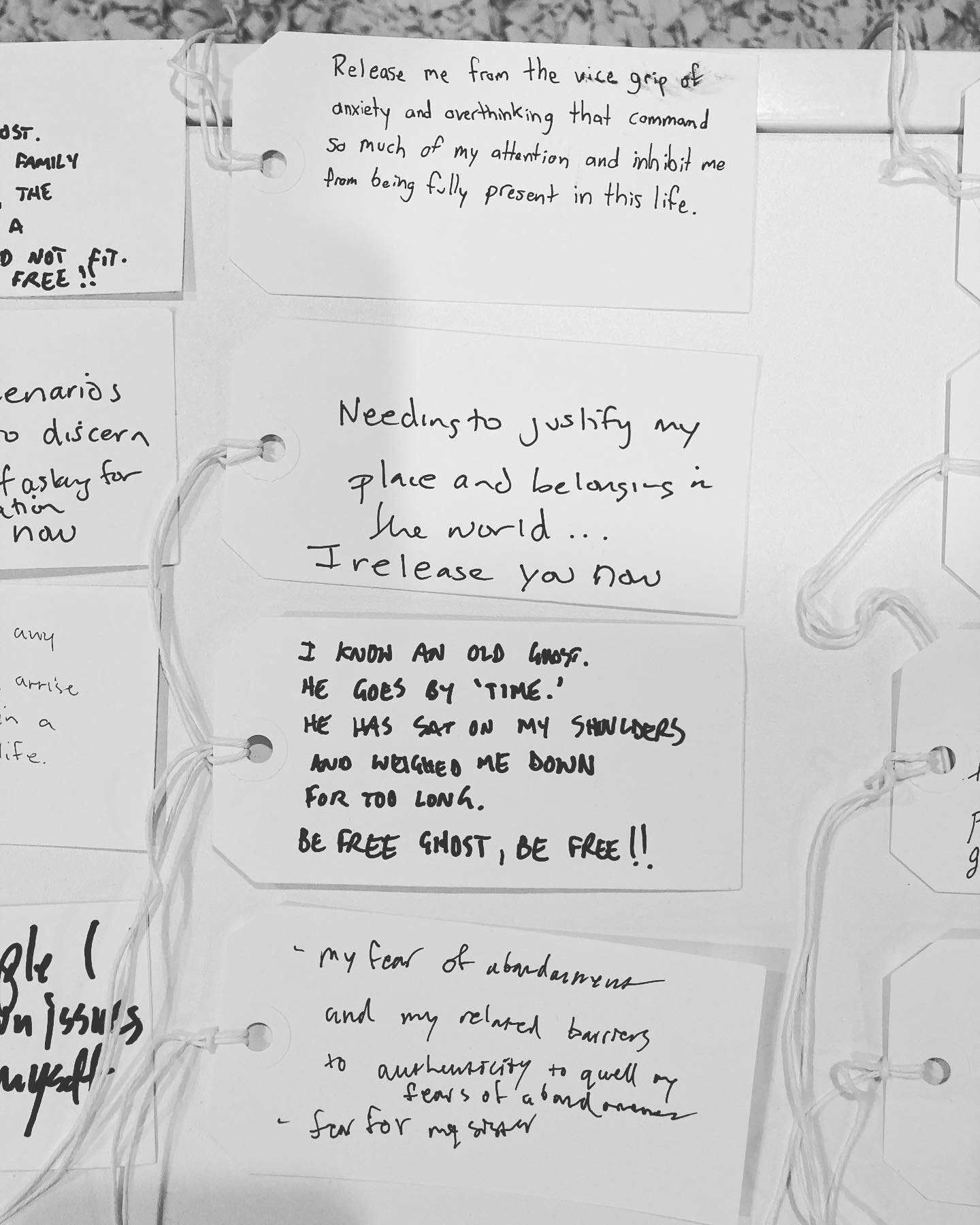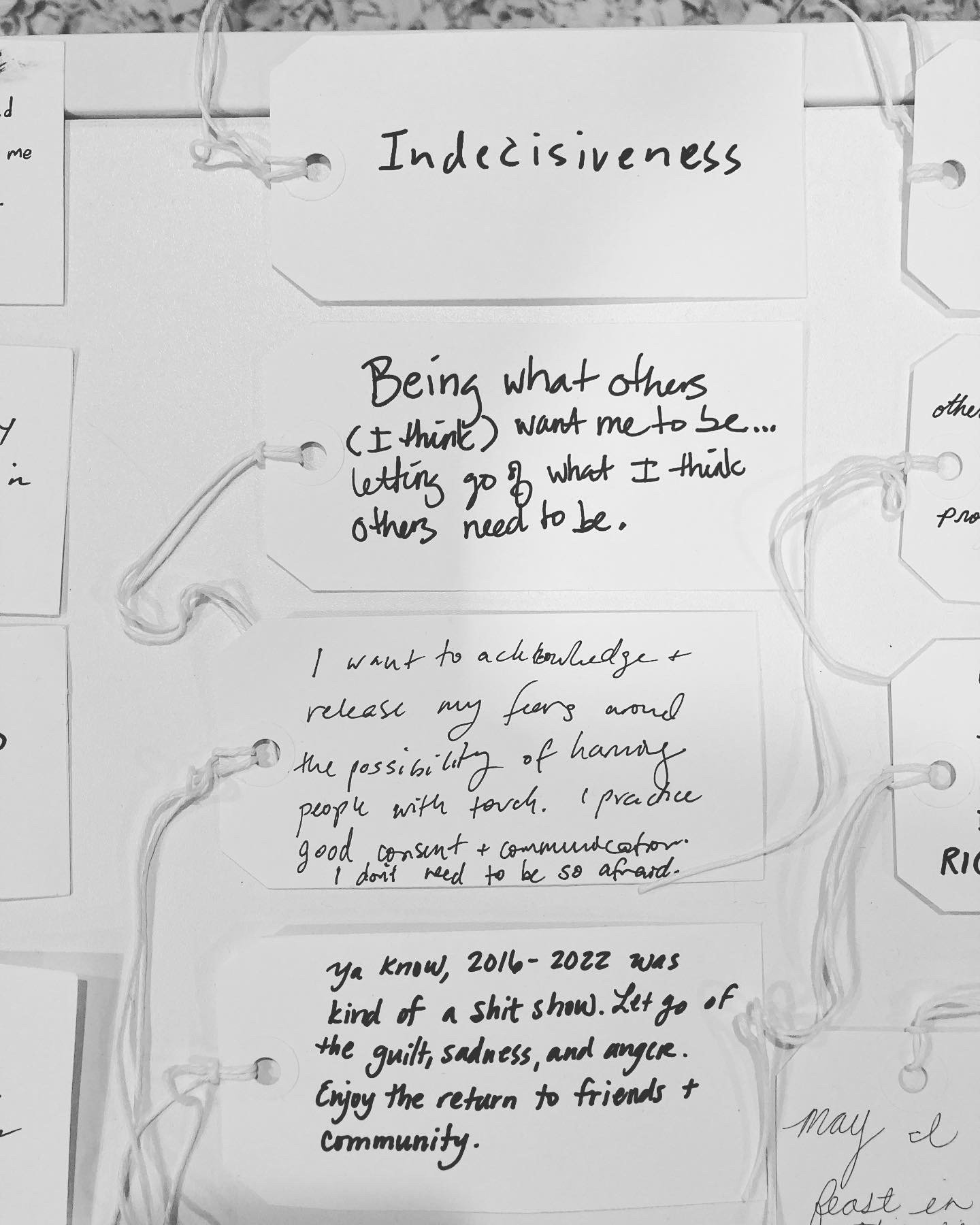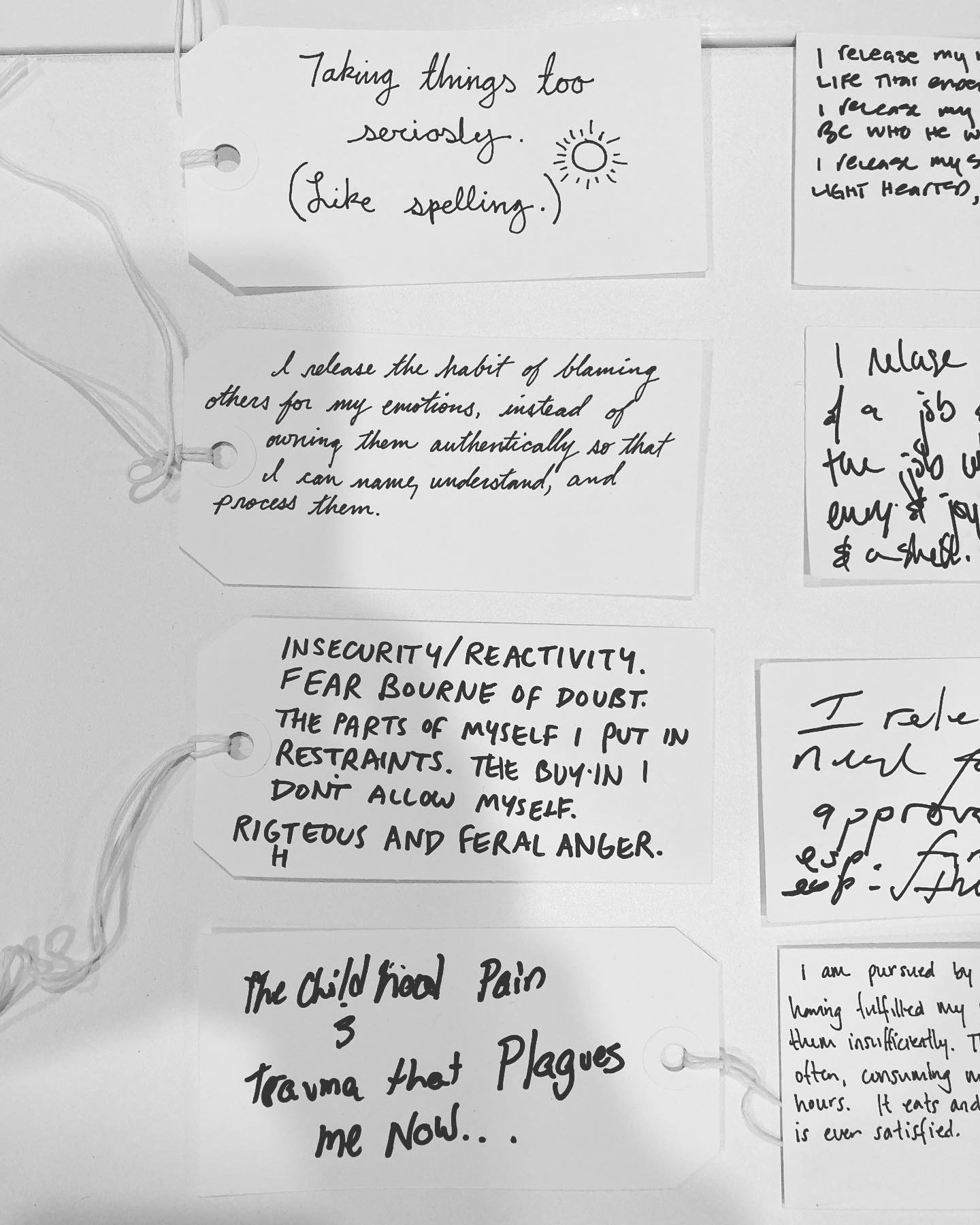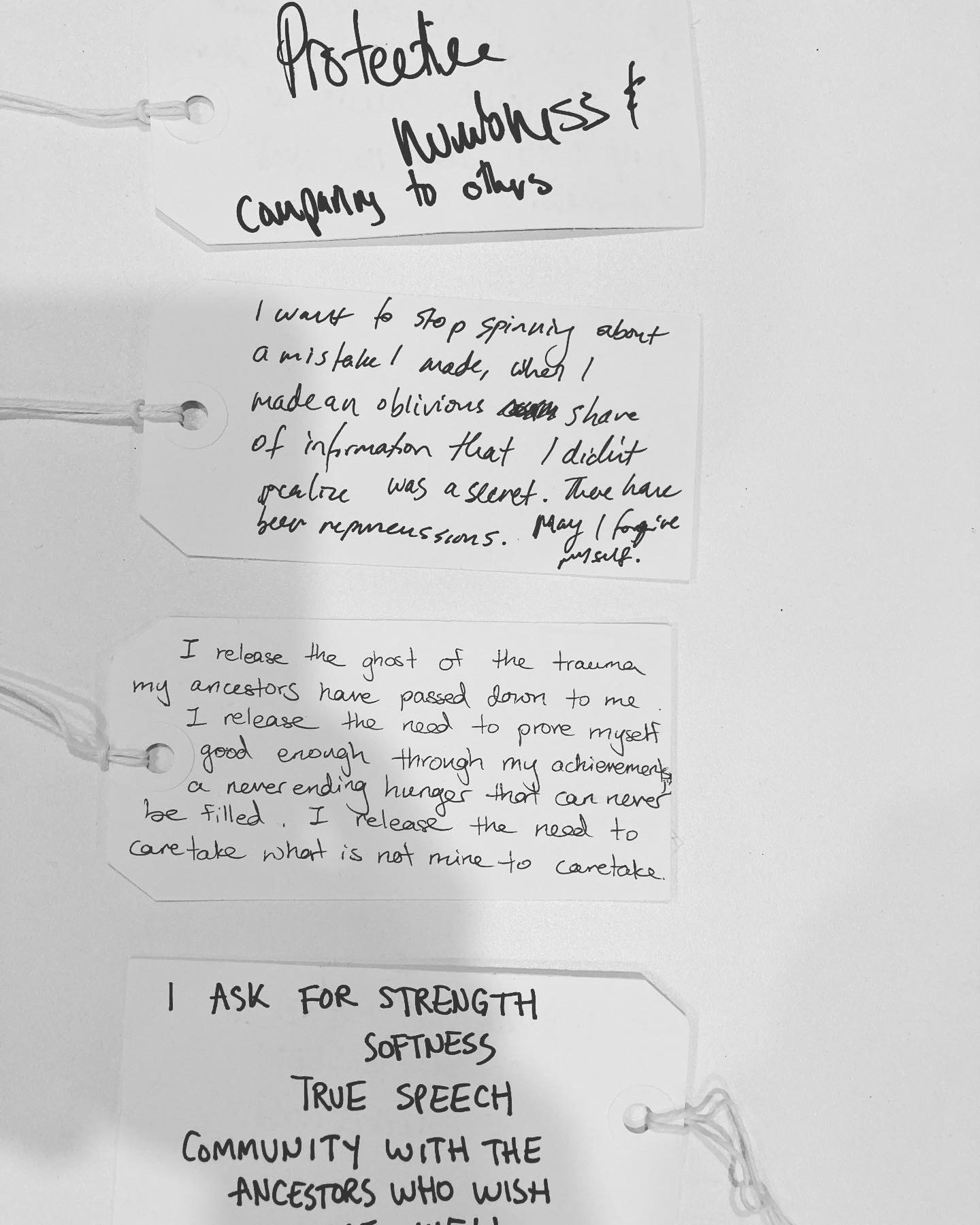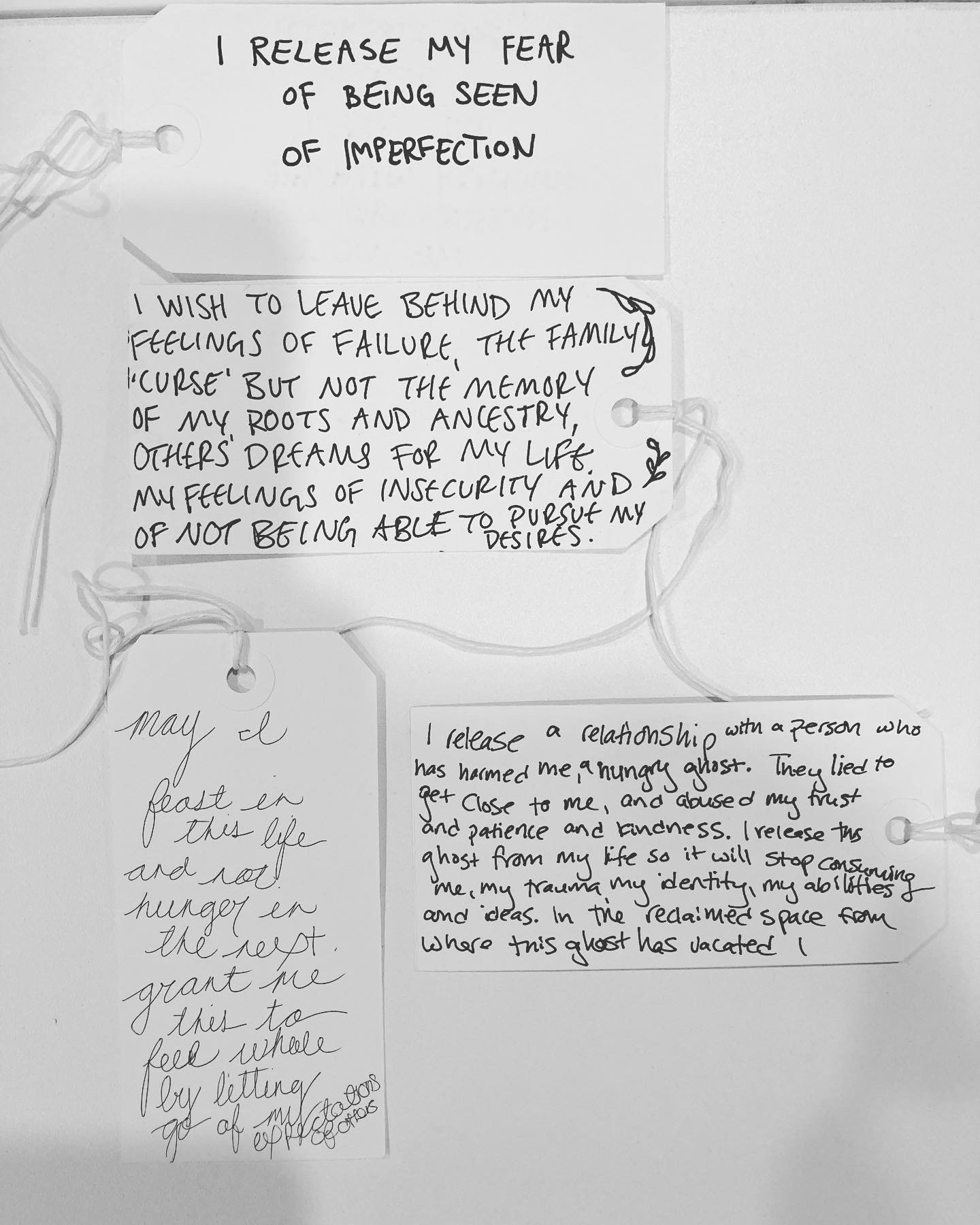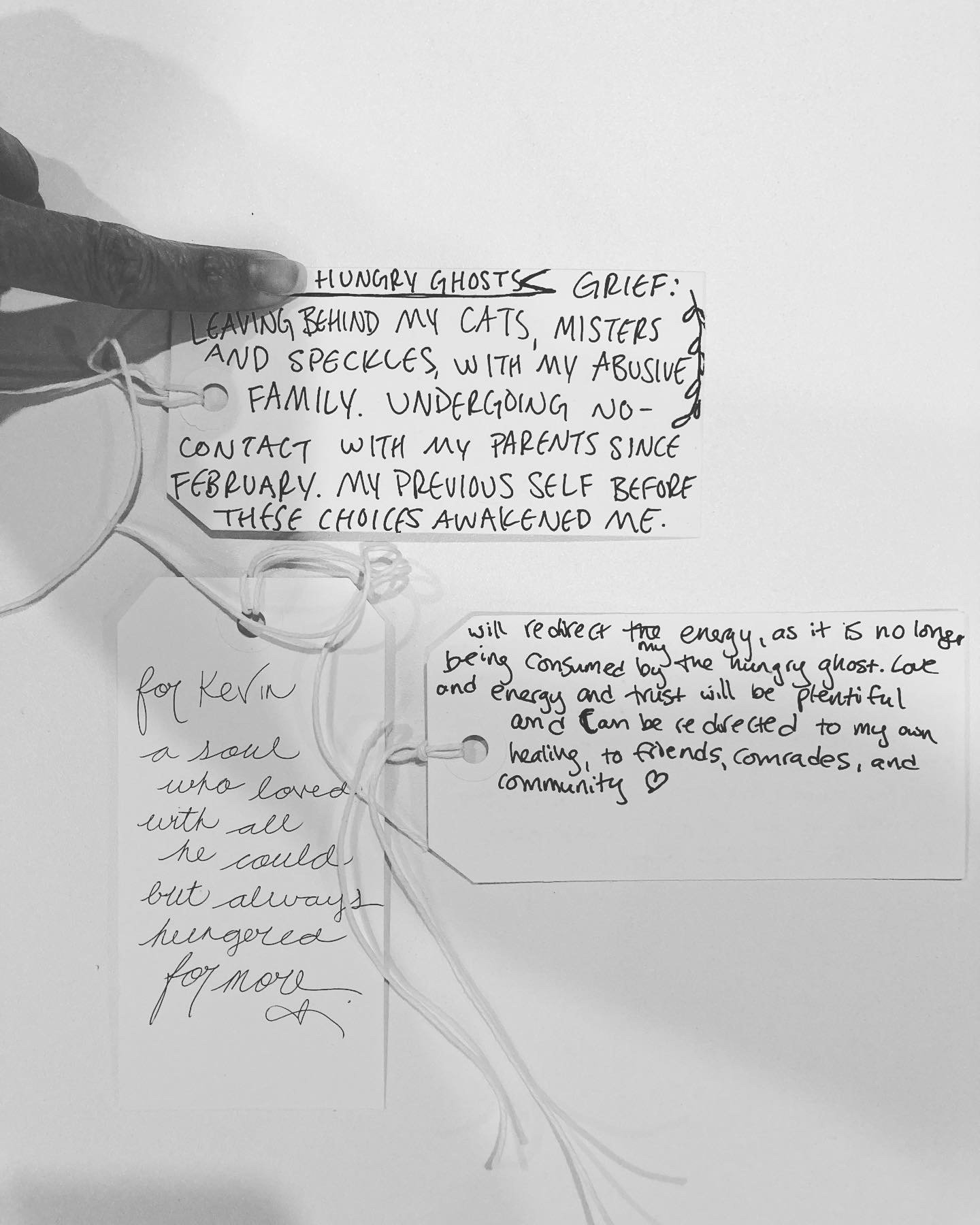No New Normal
No New Normal is a community-informed exploration of the concept of “normal;” how that concept has been affected by the large events over the last few years, how “normal” has historically been harmful to out-groups, and how it still perpetuates harm when people strive for a “new normal”, which is in no way achievable thanks to the continuously shifting and volatile landscape of politics and our climate. No New Normal encourages us to think about what would happen if we reject normalcy; stop trying to achieve it altogether, instead acknowledging that our world is constantly shifting, and embracing the flux. In its incarnation at Portland Center Stage’s Ellen Bye Gallery, the work took the form of a participatory reflection on the rituals of care we developed as a result of the pandemic: how our normalized concepts of both self care and community care were not adequate once COVID-19 came around, the new ways we learned to care for ourselves and our communities out of love and necessity, and a dreaming for a future where we continue to learn, grow, and care for one another ever more deeply. The work ran concurrently with Pulitzer Prize finalist Kristina Wong’s production of “Sweatshop Overlord,” and theater-goers were encouraged to participate by adding their own impressions and ideas using the Sharpies and blank face masks available in the gallery during four artist-led sessions during previews week. The finished piece remained on display for the duration of the run of Kristina Wong’s play.
Block 14 Labyrinth
May 16, 2023
Please note that due to recent findings regarding remains at the site, I will be removing the labyrinth and creating a new ephemeral work in the space that does not rest upon ground that may still contain ancestors.
When I began to engage with the space at Block 14, one of my goals was to create a reason for the public to want to enter the site. The large black chain surrounding Block 14 is rather foreboding, especially for those who want to be respectful; many people - even Chinese Americans - felt unwelcome at Block 14. My answer was to build a labyrinth, which draw people to the space and give them cause to interact with it.
Labyrinth designs have been found around the world on pottery, tablets, and tiles that date back as far as 5000 years ago. A labyrinth is not a maze; there are no tricks to it, no dead ends, and it is not meant to be confusing or disorienting. A labyrinth simply provides a path that winds its way to the center and back out again.
Large, walkable labyrinths can be used as a way to quiet the mind and encourage meditation, insight, and self-reflection. Some people come to a labyrinth with questions, others just to slow down and take time out from a busy life. Some come to find strength to take the next step. Many come during times of grief and loss. Walkable labyrinths can be found in medical centers, parks, churches, schools, prisons, spas, cathedrals, retreat centers, in people's backyards, and in this particular case, Block 14 of the Lone Fir Cemetery.
Creating a walkable labyrinth is no small task; one has to take into consideration materials, size, accessibility, as well as just how the heck to get the initial shape onto the ground. My task was made even more difficult by the simple fact that the this was to be a piece of guerilla art; I was not asking for permission to build the labyrinth, but simply going there and doing it as an act of love for the ancestors buried there. Furthermore, I couldn’t disturb the ground whatsoever, as there are people buried onsite and to disturb the ground would be incredibly disrespectful.
I settled on using a cement block with a piece of rebar duct taped to it as the center of my compass, and tied a ridiculously long piece of rope to the rebar. From there, I delineated the central circle of the labyrinth, and worked out from the center. It was a fairly time consuming endeavor, because I was using pieces of rock and rubble that I could find around Block 14 to mark out the sides of the pathways. The bits I was finding all came from the building that stood there from 1952 to 2005, so I was finding a lot of pieces of asphalt, bits of tile and cement, and twisted rusty wire along with the rocks. These were strewn about all over the place, not in any particular location, and walking the entire site gave me the chance to clean up the space, as there was quite a bit of litter when I first arrived.
At the same time that I began constructing the labyrinth, I began posting about Block 14 on Instagram. I posted a call for engagement for days that I knew I would be there, welcoming anyone from the community to come and join me. The first couple of times I was alone, but quickly my posts started to attract attention, and once that happened I always had company while I was there.
There is no right or wrong way to walk a labyrinth. You may go directly to the center to sit quietly, or meander the paths without ever even entering the central circle; whatever meets your needs. You are also welcome to help with the upkeep of the labyrinth by replacing rocks that have been knocked out of place, or even adding rocks to further delineate the paths.
Guidelines I follow while working on the labyrinth:
Use only what you find within Block 14; do not bring any rocks, bricks from outside the boundaries of the site
When gathering rocks from around Block 14 to add to the labyrinth, use only rocks that are sitting easily on top of the ground; never pry anything from the soil.
When placing rocks in the labyrinth, do not stack them, as the landscapers mow right over the labyrinth and have complained in the past about the rocks creating a hazard.
The original design of the labyrinth (below) is your guide while you are adding/moving rocks.
Gather any litter you find and dispose of it in the trash bins located within the cemetery a couple of blocks NE of Block 14.
The Ghost Archive
Hungry ghosts are a concept in Chinese Buddhism, Chinese traditional religion, Japanese Buddhism and Tibetan Buddhism. In the Taoist tradition it is believed that hungry ghosts can arise from people whose deaths have been violent or unhappy. Both Buddhism and Taoism share the idea that hungry ghosts can emerge from neglect or desertion of ancestors.
Although it is believed in some traditions that hungry ghosts are incorporeal manifestations of people who have died unhappy deaths or have been forgotten in death, they can also be understood to represent, more broadly, a spiritual state of hunger. Don’t we all wish for truth and fulfillment in our everyday lives? Don’t we occupy our bodies and minds with things that please us in the moment but fail to provide us with any lasting satisfaction? Regrets, resentments, anger, diversions, habits, addictions…our days are eaten away by discontentment. These “ghosts” distract us from our purpose and disrupt harmony in our lives.
The Ghost Archive stands as the anchor structure of the Hungry Ghost Picnic. At the threshold of the Archive is the Altar, where people can leave offerings to the Hungry Ghosts said to be roaming the land. Attendees will also find pens and paper tags at the entrance to the Archive, and this is what they will use to make a contribution to the Archive once they are ready. While participants picnic together around the Archive, they are encouraged to look inward and identify the ghosts that may be haunting them and holding them back. The pens and tags provided are used to name these ghosts, and once named they are offered a new residence by tying them to the strips of fabric and lace that make up the walls of the Ghost Archive. Everyone is welcomed to walk around the Archive and learn about one another’s ghosts; our struggles are our own, but they are not unique, and the submissions to the Archive show this and help us deepen our compassion for one another and ourselves.
The Hungry Ghost Archive will open again on the evening of August 30, 2023, at a Portland park location TBA. Below are the ghosts that were archived in 2022.
